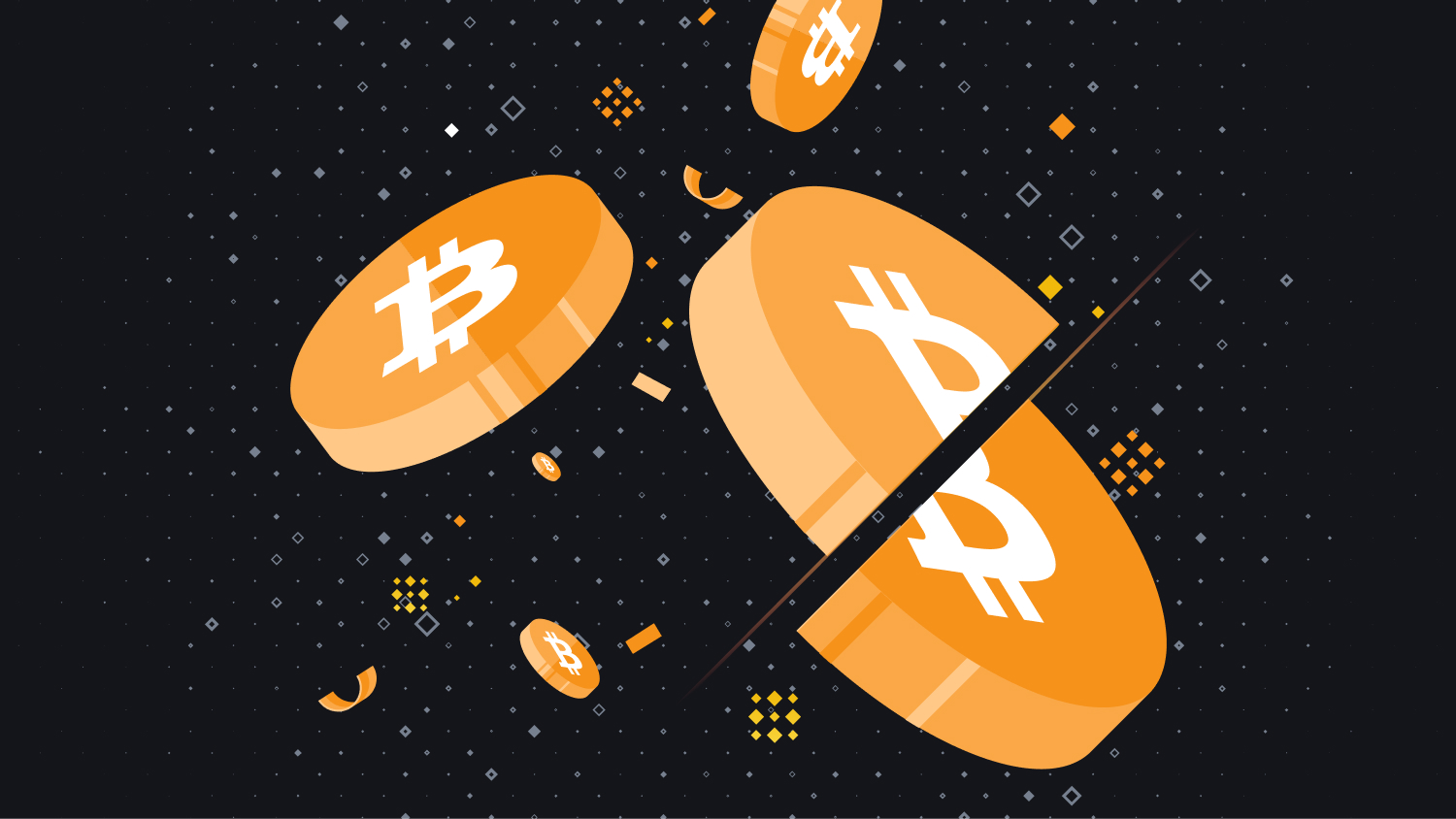The next Bitcoin block halving will reduce the block reward of 12.
Hey Binancians, thanks for checking out the latest installment in our Education 101 Series. If you missed our previous articles, check them all out here in Your Guide to Crypto Literacy.
Now that we know more about consensus algorithms, we’ve reached a good opportunity to talk about an important aspect of Bitcoin’s consensus algorithm.
Set to occur in mid-May, the next Bitcoin block halving will reduce the current block reward of 12.5 BTC per block to 6.25 BTC.
What is a halving and what does it mean for the miners, hodlers, and markets? Read on to find out!
What’s a halving?
A “halving” takes place when the block reward distributed to miners for mining new blocks gets cut in half by the code governing the system.
Halving events have different effects on different participants in a decentralized ecosystem.
For hodlers, a halving decreases the supply of digital assets. If the demand for an asset remains constant or increases, then the decreased supply should force prices upward and increase the value of the Bitcoin already held by hodlers.
For miners, a halving decreases the block reward miners can earn for mining new blocks.
Miners are rewarded in two ways: the block reward and the transaction fees associated with the transactions included in a block. The logic behind halvings assumes that as a network grows and experiences halvings, the value of transaction fees will replace that of block rewards.
This means a block reward can be devastating for networks that haven’t achieved much use.
The Bitcoin Halving
The truth is, we won’t really know whether or not transaction fees can replace block rewards until it happens.
Fortunately, Bitcoin shouldn’t reach its hard cap of 21 million coins until 2040 and indicators like the number of transactions per day show healthy growth in usage of the network.
Source: https://www.blockchain.com/charts/n-transactions
Bitcoin’s core client divides the subsidy distributed to miners every 210,000 blocks, or approximately every four years.
Here’s the actual code that executes Bitcoin halvings:
Source: https://github.com/trottier/original-bitcoin/blob/master/src/main.cpp
The code shows that Bitcoin started with a block reward of 50 BTC, meaning it has already been through two halvings to arrive at the current reward of 12.5 BTC.
Miners typically mine a new block every ten minutes so at the current rate of block production, the next Bitcoin halving is set to take place on May 12, 2020. After that, the reward for mining a new block will be reduced to 6.25 BTC.
The block reward will continue to decrease until the maximum supply of 21 million Bitcoin has been mined. Unless something changes in the meantime, current projections say the last Bitcoin won’t be mined until 2140.
Pricing in Halvings
Part of what gets people so excited about halvings is the speculation around what will happen to the price of Bitcoin following a halving event.
Some believe the decrease in supply will translate into an increase in the price of Bitcoin, the logic being that unless demand suddenly drops as well, a sudden drop in supply should cause speculators to bid more and raise the price of Bitcoin.
On the other hand, a quick glance at the price action following the first and second halvings of Bitcoin suggests that halving events may not be the moonshots we’re looking for.
Source: https://coinmarketcap.com/
Most traders and investors know about halving events and have every opportunity to consider them when speculating on the price of an asset like Bitcoin.
Since the changes in supply aren’t unexpected, it wouldn’t be unreasonable to assume that the effects of halving have been reflected in the price of Bitcoin before the event occurs.
Eager to learn more?
Whether or not you believe the next Bitcoin halving will spawn a bull run for the cryptocurrency, the May 12 halving is coming up soon!
Binance.US make it as simple as possible to purchase Bitcoin so sign up today to join over 100 million hodlers embracing the vision of decentralized finance (DeFi).
If you’re looking to learn more about speculating on digital assets like Bitcoin, stick around!
The next article in our Education 101 Series will focus on risk management. We’ll introduce the topic of financial risk, provide best practices on risk management, and explain how market cycles affect the psychology of investors.
In case you missed the previous articles in our series, be sure to check them all out here in Your Guide to Crypto Literacy!
Follow along as we add to our Binance.US Education 101 Series: Your Guide to Crypto Literacy
#1 Demystifying Digital Dollars
#2 Evolution of the Internet
#3 Finance, Rhymes with …
#4 Back that Asset Class Up
#5 What are Cryptocurrencies?
#6 Defining Decentralized Finance
#7 Cryptoeconomics Explained
#8 Intro to Consensus Algorithms
Ready to learn more?
Stay tuned for our next Education 101 Series! Follow us on Twitter @BinanceUS
Learn Together. Earn Together.
Share Your Guide to Crypto Literacy + your Binance.US referral link with friends.
Start Trading Now!
Download the Binance.US app here
*Legal disclaimer:
This material has been prepared for general informational purposes only and should NOT be: (1) considered an individualized recommendation or advice; and (2) relied upon for any investment activities. All information is provided on an as-is basis and is subject to change without notice, we make no representation or warranty of any kind, express or implied, regarding the accuracy, validity, reliability, availability or completeness of any such information. Binance.US does NOT provide investment, legal, or tax advice in any manner or form. The ownership of any investment decision(s) exclusively vests with you after analyzing all possible risk factors and by exercising your own independent discretion. Binance.US shall not be liable for any consequences thereof.


